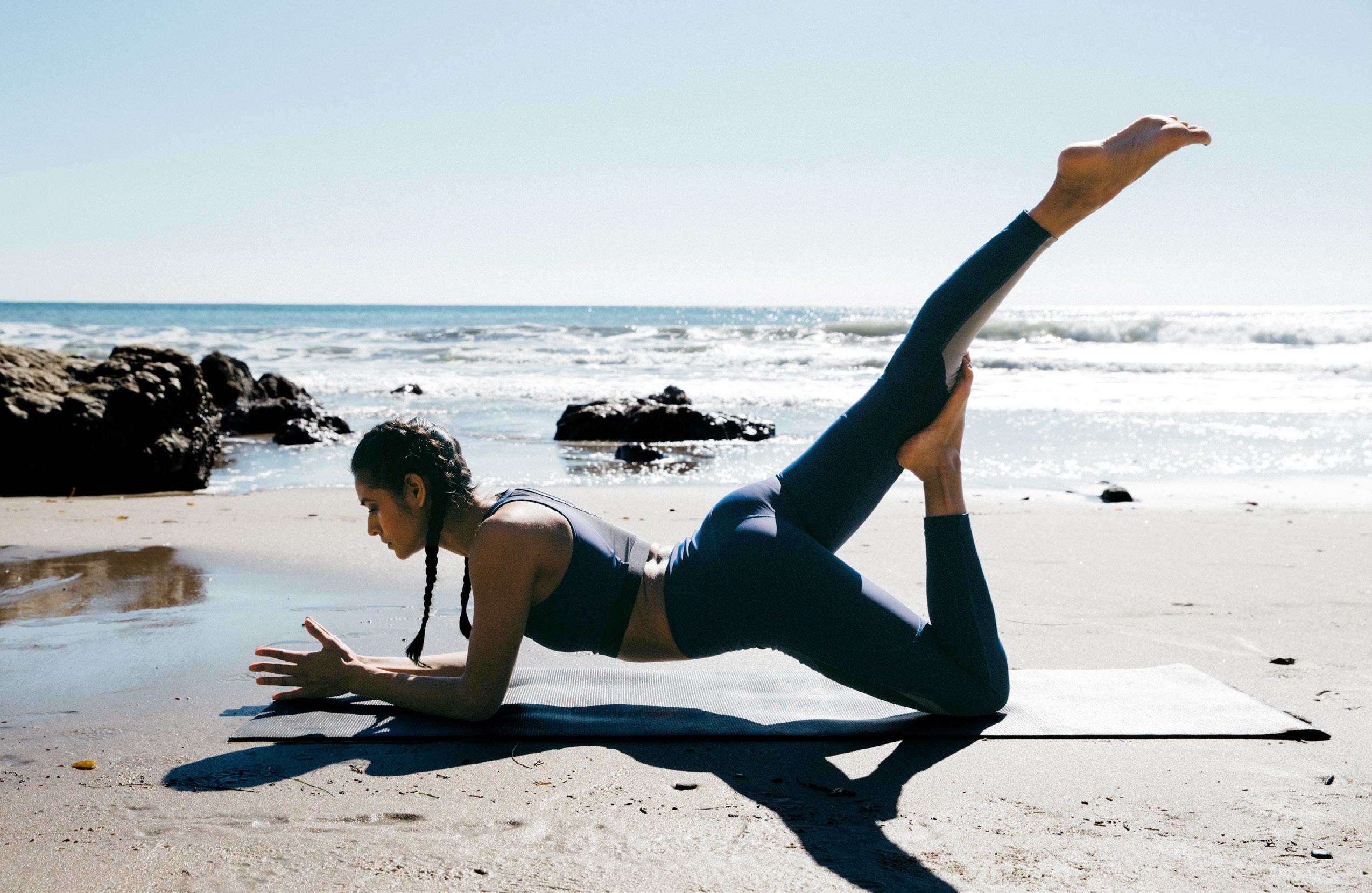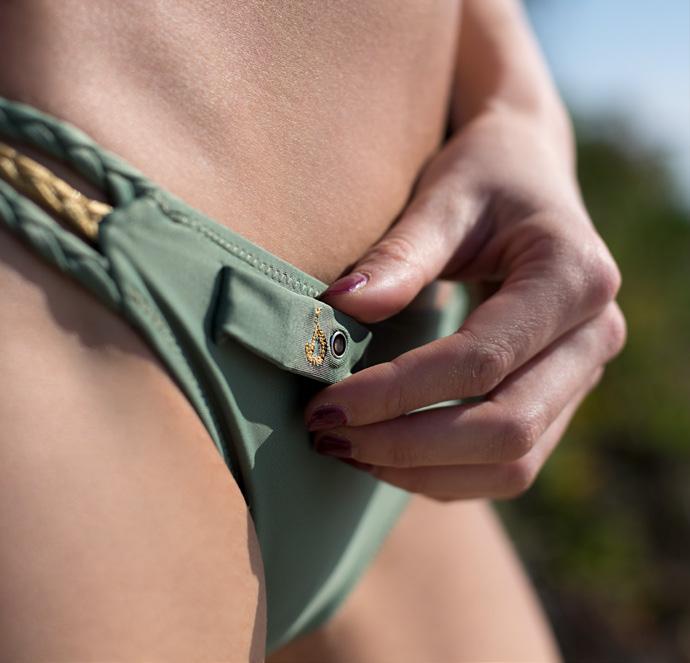
7 minute read
The green shoots of innovation Fashion and sportswear brands are moving to more sustainable and earth-friendly products
from Upswing 2021
by Upswing
THE GREEN SHOOTS OF INNOVATION
Words Craig Buglass
Advertisement
INNOVATION AND SUSTAINABILITY HAVEN’T ALWAYS BEEN THE MOST COMFORTABLE OF BEDFELLOWS – PARTICULARLY IN THE WORLD OF SPORT. THE FORMULA 1 TOUR GENERATES HUGE AMOUNTS OF CARBON EMISSIONS (OVER 250,000 TONNES IN 2018), POLYESTER CLOTHING CAN TAKE UP TO 200 YEARS TO DECOMPOSE, AND EVEN THE LONDON MARATHON LEAVES BEHIND 5,200 KG OF RUBBISH AND 3,500 KG OF RECYCLING.
© The Plastic Pick-Up
Californian teenage diver Alex Weber and her father have fished more than 50,000 golf balls out of the ocean to stop them for poisoning sea creatures.
Golf isn’t immune from environmental criticism either. Usually centred on land and water usage, any claims are typically countered with the true level of water required by fairways and the evidence that a properly designed and maintained course can support drainage, oxygen production and provide suitable habitats for wildlife. The R&A have issued environmental impact guidelines that will go a long way to ensuring golf courses are a net benefit to the planet for years to come.
One story from the golf world that was difficult to dismiss, though, concerned a teenage diver in California who, swimming off the coast of Pebble Beach in 2017, found in the region of 50,000 golf balls on the ocean bed. Over time, golf balls will degrade to release a small amount of toxins into the water. However, the bigger issue is the decomposition into microplastics that could be consumed by marine life and inadvertently find their way up the food chain. •
Whilst, for the most part, outdoor sports like running or golf are environmentally friendly, there are always areas that can be improved. The key challenge for designers, engineers and scientists is to innovate in a way that not only promotes sustainability without impeding performance but, where possible, enhances the function of the new, greener products.
Seemingly small and simple initiatives, such as using recycled polyester in clothing, can become wide scale across the sporting industry and have huge benefits. Equally, grand ideas can initially drive up costs
Spring Summer 2021
Collection

Nadi X: yoga pants that provide haptic feedback (little pulses or vibrations against the skin) to improve posture and pose during a session.

but have a massive long-lasting upside. The New Jersey Devils spent over $1m on a dehumidifying system for their ice hockey arena, ensuring a perfect 30% humidity to keep the ice in immaculate condition while delivering a 22% saving on energy usage.

Let’s zero in on innovation and sustainability in clothing, though, as it’s the one constant in every sport from mountain climbing to surfing, and a perpetually thorny topic whether we’re talking about the treatments of workers or the negative effects of mass consumption.
Whilst the Covid-19 pandemic has been nothing short of a disaster, lockdown gave us an opportunity for introspection. With photos of clear waters in the canals of Venice, sheep roaming through town centres in Wales and sightings of bats up 143% in the UK, we can be hopeful that the penny has dropped and, as a society, we have a rekindled respect for our surroundings.
The Waste Management Open is widely considered the most environmentally-minded tournament on the Tour, but 2021 naturally saw a completely different tournament due to the global Covid-19 pandemic.
Last time out, plenty of companies used the event and its proximity to the PGA Merchandise Show in Orlando to raise their voices about sustainable innovation and how they were trying to pave a new way forward. Ralph Lauren, for example, unveiled three fabrics made from recycled plastic, claiming each polo shirt uses the equivalent of seven plastic bottles.
Nike and Adidas also laid out their green-cred by showcasing new golf lines with recycled materials. It’s a step in the right direction, but is it really worth shouting about? After all, Nike first unveiled fabric made from drinks bottles for their team kits at the 2010 World Cup, so why has it takenso long to drift onto the fairways?
At the WM Open, both Ralph Lauren and Adidas reiterated their strategy to be completely free from virgin polyester in
the next few years – 2024 for the German giants, with New York-based Ralph Lauren a year later in 2025. Certainly a worthwhile and beneficial goal, but it doesn’t make the products work better, merely taking a more conscious approach to manufacture. •
There’s a good argument that product longevity is even more important than thoughts of recycling products that have a limited lifespan. A bottle can be recycled to make a t-shirt, but the t-shirt can rarely be recycled because of the mixed materials in the thread, labels, logos and other trims.
Even on a golf course, there are opportunities to make better products that will last longer. Wooden tees are clearly better for the environment than plastic ones, but the complaint has long been that they break too easily. Ocean Tee claim to have overcome that issue by using bamboo to make their product. Strong but with a natural flex, bamboo is less prone to snapping than regular wood and because they grow so quickly, bamboo forests are much easier to maintain. Similarly, how often have you forgotten, misplaced or just left a plastic ball marker? Seamus are a company making hand-forged markers from bronze, copper and even recycled oil cans, meaning you’re more likely to treasure them and less likely to leave them behind.
If we look outside of golf, innovation continues to be the cornerstone of other sports and increasingly with an eye on the environment around the wearer. Neviano, for example, create swimwear that monitors UV exposure and communicates with your phone to send you reminders to put on more sunscreen. In golf, this could make scarlet forearms and faces a thing of the past. The Aerochromics brand have developed a print that can warn you if air pollution levels are getting too high – useful if you’re playing a round in Beijing or LA, perhaps.
Elsewhere, your outfit can intuitively help you to up your game. Nadi X sell yoga pants that provide haptic feedback (little pulses or vibrations against the skin) to improve posture and pose during a session. Imagine a base layer that could read your swing or help to retrain your tee shot. Scientists at the Massachusetts Institute of Technology have engineered a bacteria-based fabric coating that reacts to sweat, opening lasercut vents around the garment to keep you cool on demand.
But what, if technologies offer a benefit to both the user and the environment? Materials are a great place to start with that, particularly antimicrobial fibres that prevent clothes from smelling, even after multiple uses between washing. Products such as X-Static and SILVERbac use the natural properties of silver to help keep you fresh, reduce the amount of laundry you need to do and increase the lifespan of your clothes.

Neviano: swimwear that monitors UV exposure and communicates with your phone to send you reminders to put on more sunscreen.
Other material innovations are looking back to nature too. Lab-grown leathers are more durable than the real thing but with the same texture and smell, whilst more typically grown materials like wood and cinnamon can be used to create fabric that will keep you cool, dry and comfortable. •
Golf remains a relatively untapped market in terms of true innovation in clothing and a focussed approach to environmental responsibility, but change is surely just around the corner. Industry insiders are whispering about a new brand called Bounce, which is supposedly being developed by executives from within fashion, sport and technology with a shared love of golf to combine cutting-edge ideas with style and sustainability. It’s all being kept top secret, but the time has never been better for a brand like that to enter the stage.
While strict rules are in place regarding the performance enhancing features of equipments such as clubs and balls, there is still a long way to go between what is legal in clothing and what is currently available. If golfers were presented with an opportunity to look smart and be comfortable whilst wearing technical fabrics and doing their bit to protect the environment, who among us wouldn’t welcome that?
The green shoots of innovation appeared in Phoenix and Orlando at the start of 2020, but the onus is firmly with the players to tell brands that table stakes aren’t enough, to tell them that they need to do more, to innovate more. And to do the right thing while they’re at it.










